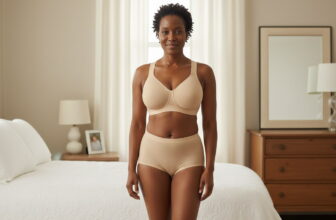Virtual Fitting is theoretically a revolutionary technology in retail. However, not all retailers use this feature in practice. Although they understand that the usage of virtual and augmented reality technologies in retail is getting more and more popular, gaining momentum. Moreover, customers who are passionate about technology (and that’s more than 80% of modern consumers) are using virtual fitting capabilities with pleasure nowadays.
Why aren’t retailers rushing to pamper their customers by offering them digital try-on? What stops them? Let’s try to figure it out.
When will it be possible to pick exact sizes online?
The main reason is that retailers don’t trust AR and VR technologies — particularly virtual fitting technology. They don’t even think about how much they can increase sales with virtual and augmented reality because they don’t want to face the fact that it really works.
Some retailers refuse to accept that working solutions are already presented on the market, while others refuse to understand that these technologies work differently. Surely, there are quite a few developers who, at one time, haven’t managed to overcome too many contradictions between expectations and reality. For example, startups like Dressformer got over 3 million euros invested 5-7 years ago. Time passed and investors started demanding a return on the investments, but the only thing the company managed to achieve was to create a funny but useless toy. It is very revealing that the key problem on the way of the developers was not the technology ( it is possible to solve most problems technologically), but the specifics of the fashion industry.
Every developer uses different methods to digitize clothes. Previously, developers did not use neural networks to process and add clothing to the catalog. Thanks to modern solutions based on neural networks, customers can assess how outfits suit them, whether they match each other and whether they fit in color and sizing. Thus users can do reasonable shopping. In turn, this saves retailers from returns and unredeemed orders.
-In 2020, U.S. online retailers lost $56 billion in apparel returns.
-89% of shoppers returned purchases they made in 3 years.
-79% of all online fashion returns happen due to personal preferences.
Wrong size, bad fit, colors’ mismatching, non-specified descriptions of goods, personal preferences and simply changing one’s mind — returns have become normal for e-commerce. But something needs to be done about it, as in most situations companies spend more than the product was worth on repackaging and shipping, and sometimes it’s cheaper to send it to the dump. AR and VR technologies usually solve this problem. The main thing is to choose the right technology and trusting developers.
Is increasing sales possible with virtual and augmented reality solutions?
One of the main trends in 2021-2022 is the maximum transition from offline sales to online sales. This is why combining physical and digital channels can increase sales. The usage of artificial intelligence and virtual reality solutions, such as AI-powered virtual fitting rooms, virtual shopping assistants, and chatbots offers significant advantages to retailers.
The new experience leads to greater consumer engagement. It allows retailers to combine physical and digital channels — traditional stores start adopting digital technologies and online stores create virtual showcases. Greater consumer experience generates more sales — the customer can assess how a certain jacket fits him, then there appears a desire to choose pants and a shirt that match the jacket.
If you want to take advantage of VR and AR you can follow these tips:
Act quickly to make AR and VR a part of your digital strategy. This is not a distant perspective – it’s high time to think about implementing these solutions.
Combine a unique offer and define your business model. Make sure customers clearly understand how virtual technologies can help them solve their problems. Identify resources, specific goals, and performance metrics for your project.
Think of collaborations with technological leaders. Retailers don’t have to be experts in the tech sphere. Look for opportunities to access world-class technologies and proven solutions.
We compared several working solutions and found out that today’s leader in the digital try-on market is the fitting room powered by the GoodStyle app.
 Photo: Getty Images
Photo: Getty Images The use of a virtual fitting room gives significant benefits to retailers:
- Increased visitor-customer conversion;
- Increased average check;
- Reduced returns.
Customers get the following bonuses:
- Reduced possibility of sizing mismatch;
- Ability to visualize how the items fit — color, style;
- Opportunity to combine pieces of clothes and create a functional wardrobe – to buy outfits, not items.
V-commerce is being developed and improved nowadays, but the time for retailers to start investing in these technologies has come. Creating consumer experiences that help customers purchase more and increase sales of retailers is a priority.






